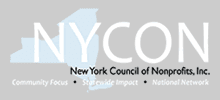 | |
FOR IMMEDIATE RELEASE
CONTACT: | |
Cheryl Loe
Communications Project Manager The Foundation Center (888) 356-0354 ext. 701 communications@ foundationcenter.org |
Catherine Lennon
Communications Director European Foundation Centre +32 2 508 3075 clennon@efc.be |
New Guide Helps Funders Adopt a Transparency MindsetPhilanthropists Indicate That Openness Leads to More Effective Social Change in "Opening Up: Demystifying Funder Transparency"
New York, NY — February 6, 2014. As funders face an increasing demand by the nonprofit sector, the public, and governments to be more transparent, a new GrantCraft guide released today in collaboration with Glasspockets provides practical advice for funders to publicly share various aspects of their operations, work, and knowledge. Opening Up: Demystifying Funder Transparencypresents real-world case studies that demonstrate the value of foundation transparency in strengthening credibility, improving grantee relationships, facilitating greater collaboration, increasing public trust, reducing duplication of effort, and building communities of shared learning. The guide joins a growing collection of resources published by GrantCraft, a joint service of the New York-based Foundation Center and Brussels-based European Foundation Centre that taps the practical wisdom of funders to develop free resources for the philanthropy sector.
"The research we conducted for this guide demonstrates that funders who openly communicate about their work are finding it to be a win-win strategy," said Jen Bokoff, director of GrantCraft at the Foundation Center. "Grantees, funding partners, the public, and philanthropy professionals themselves all benefit when foundations make their work and their knowledge broadly accessible."
A commitment to transparency means a foundation is making available information on aspects of its work, including past grants awarded, the grantee selection process, performance assessments, and strategy documents. In addition to web sites, foundations are also employing social media, video, conferences, publications, and other media to share knowledge about their work. Funders profiled in the guide listed many benefits of transparency, such as gaining efficiencies in time, receiving better and more appropriate grant proposals, and increasing effectiveness based on feedback loops and greater awareness of peer efforts.
Other key insights in the report include:
The guide is divided into five sections, each of which addresses a key aspect of transparency: sharing grantee data, sharing performance assessments, improving relationships, improving the practice of philanthropy, and recognizing opportunities for connecting. Each section explores transparency with funder stories, a list of challenges, action steps, and discussion questions. The guide does not advocate for a "one-size-fits-all" approach, but rather, uses qualitative research to show how each foundation can determine a level of transparency for itself that is appropriate, beneficial, and part of an ongoing process.
The guide is based on an international scan of the field, and one of the real-life examples comes from South Africa: Jason Hudson, the Shuttleworth Foundation's chief information officer sums up its strategy as follows: "We have a mildly aggressive obsession with being transparent. We open up our financials and share our planning, learning, and relationships as we go along. It's not easy and, at times, quite uncomfortable, but by doing this, we hope to have partners who come with better ideas, offer improvements, and even run with things on their own. That's what we want."
Opening Up: Demystifying Funder Transparency is complemented by online components, including podcasts and the complete results of the transparency survey. Knowledge tools on the Foundation Center's newly-redesigned Glasspockets web site help foundations incorporate transparency activities into everyday practice, and an ongoing conversation can be found at theTransparency Talk blog. The Glasspockets site is also home to a new videothat makes the case for foundations to be transparent, as well as an infographicthat reveals trends with foundations and social media.
Opening Up: Demystifying Funder Transparency and related resources were funded by the Carnegie Corporation of New York. It can be downloaded for free atwww.grantcraft.org/
About the Foundation Center
Established in 1956, the Foundation Center is the leading source of information about philanthropy worldwide. Through data, analysis, and training, it connects people who want to change the world to the resources they need to succeed. The Center maintains the most comprehensive database on U.S. and, increasingly, global grantmakers and their grants — a robust, accessible knowledge bank for the sector. It also operates research, education, and training programs designed to advance knowledge of philanthropy at every level. Thousands of people visit the Center's web site each day and are served in its five regional library/learning centers and at more than 470 Funding Information Network locations nationwide and around the world. For more information, please visit foundationcenter.org or call (212) 620-4230.
About the European Foundation Centre
The European Foundation Centre, founded in 1989, is an international membership association representing public-benefit foundations and corporate funders active in philanthropy in Europe, and beyond. The Centre develops and pursues activities in line with its four key objectives: creating an enabling legal and fiscal environment; documenting the foundation landscape; building the capacity of foundation professionals; and promoting collaboration, both among foundations and between foundations and other actors. Emphasising transparency and best practice, all members sign up to and uphold the European Foundation Centre Principles of Good Practice. For more information, please visit www.efc.be.
The Foundation Center • 79 Fifth Avenue, New York, NY 10003 • (212) 620-4230
| |
Thursday, February 6, 2014
New Guide Helps Funders Adopt a Transparency Mindset
Subscribe to:
Post Comments (Atom)













No comments:
Post a Comment